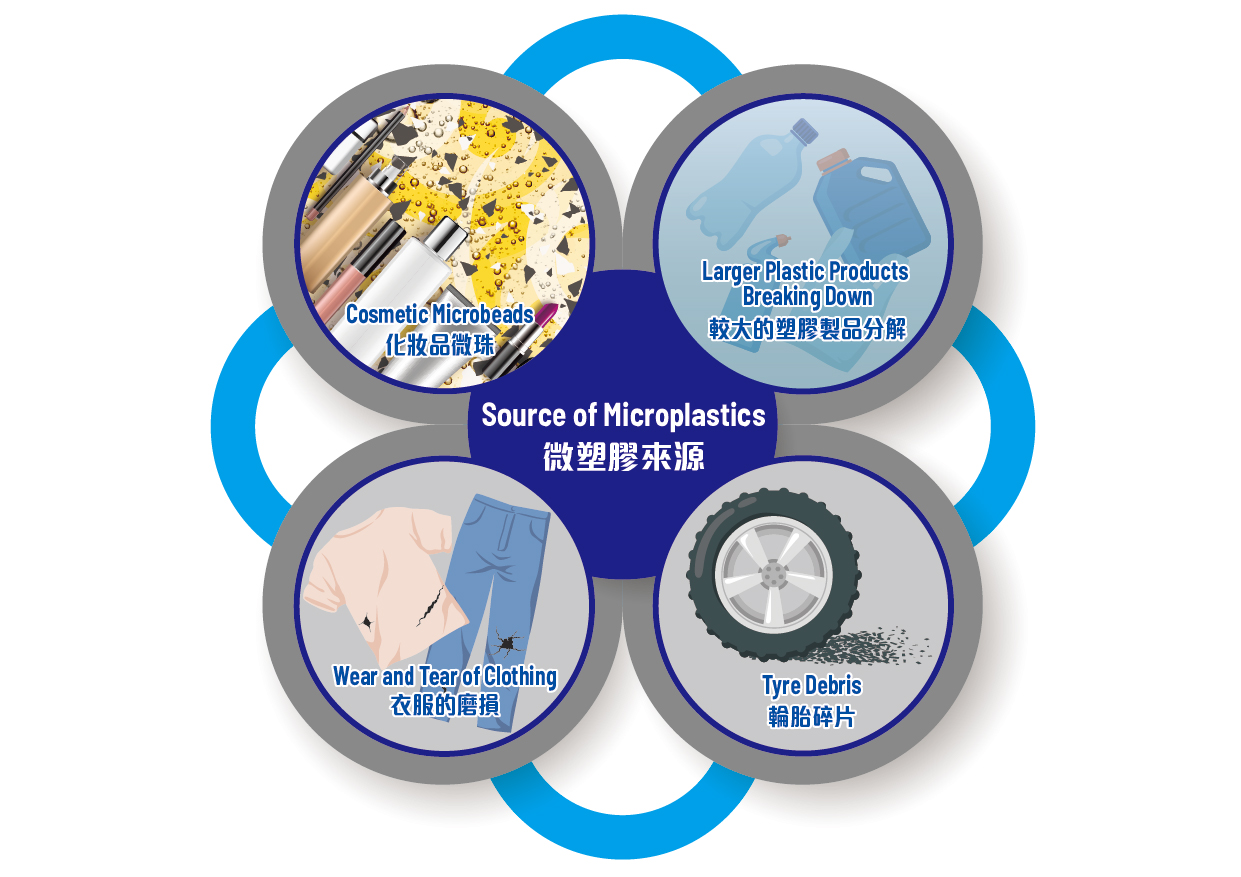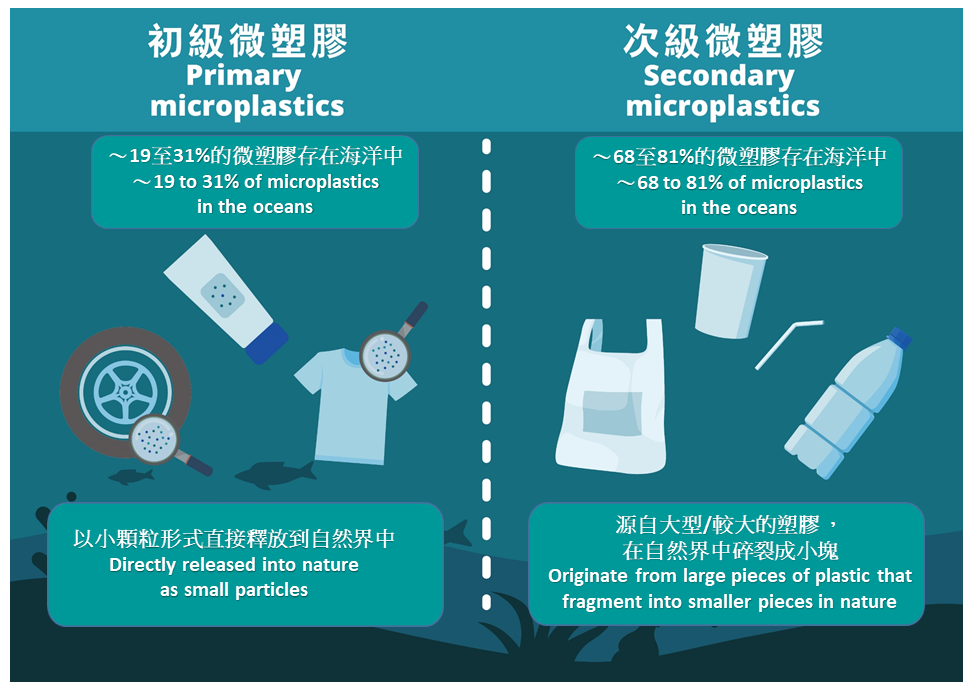
Plastic is widely used, so microplastics are commonly found in our surrounding environment, including seawater, soil, air, food, and even drinking water (e.g. bottled water). Microplastics generally refer to plastic particles smaller than 5 millimeters, which can have different chemical compositions, shapes, colors, sizes, or densities (see Figure 1).
While there is a widely accepted definition of microplastics—specifically, plastic particles less than 5 millimeters in size—there isn't a single, universally agreed-upon definition that applies to all contexts internationally.

Figure 1. Microplastics of various chemical compositions, shapes, colors, sizes, or densities

What are the effects of microplastics on humans?
The potential hazards associated with microplastics come in three forms: physical particles, chemicals and microbial pathogens as part of biofilms. Based on the limited evidence available, chemicals and biofilms associated with microplastics in drinking-water pose a low concern for human health. Although there is insufficient information to draw firm conclusions on the toxicity related to the physical hazard of plastic particles, particularly for the nano size particles, no reliable information suggests it is a concern.